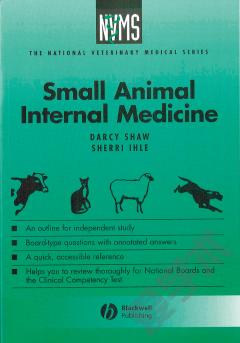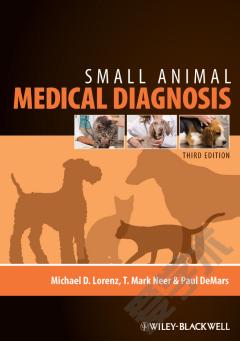Clinical Signs in Small Animal Medicine
This book was fun to go through; it is rare that I can say that about most veterinary texts. The book contains countless photographs of clinical syndromes (over 800), all of excellent quality. Most of the images are of clinical signs that are evident when examining a patient though radiographs, intraoperative photos and necropsy images are also represented. As the author points out, a picture is worth a thousand words (or potentially ten thousand words) and with this atlas of images, it is easy to realize that you can often learn a lot more by seeing than by just reading about something. There are a total of 13 sections on such topics as dermatology, ophthalmology, infectious disease, cardiovascular disorders, endocrinology, and neurologic disorders to name a few. Each chapter is prefaced with some of Dr. Schaerâs clinical pearls. These pearls contain useful clinical information learned through years of practice such as âprostate inflammation can cause the prostatic shuffleâ or âmammary tumors â donât stick it, cut it.â Some of these pearls are ideal guides for how to practice successful medicine. Given that this is an image atlas of clinical signs, coverage in each chapter will not be complete for every disease or sign possible. The signs covered range from common to rare â of ccourse rare is at times determined by geographic location. Given that Dr. Schaer is located in Florida, certain diseases that are seen there such as pythiosis or cycad poisoning are seldom or never seen in Canada. By and large, however, the book does cover most of the clinically relevant signs seen in small animal patients. This book is of interest to students and veterinarians as a reference image atlas. It is worthwhile to go through the whole book as you can pick up quite a few tidbits in this manner. It would also be very useful in practice in some cases to show owners illustrations of disease conditions you think their pet may have. As an example, there are good images of diabetic neuropathy, cushingoid dog, pyometra, eosinophilic granuloma complex, and dogs with hyperestrinism that could be shown to owners. Naturally not all images are suited for owners to see given that some are quite graphic.
{{comment.content}}








 京公网安备 11010802027623号
京公网安备 11010802027623号